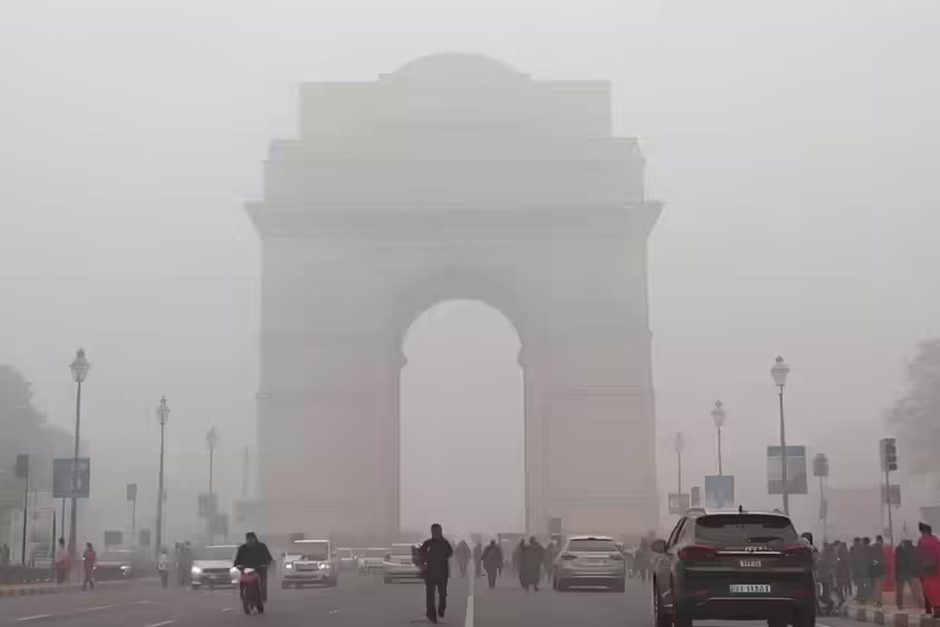As winter approaches, the familiar spectre of air pollution has once again cast a dark shadow over India’s capital. Delhi’s air quality has deteriorated sharply, with the Air Quality Index (AQI) nearing the ‘severe’ category across many parts of the city. Recent data indicates that pollution levels have crossed the alarming 400-mark in no less than 15 monitoring stations, signaling a critical public health emergency for millions.
A Choking Reality: Understanding the Current Scenario
The latest readings from the Central Pollution Control Board (CPCB) show a troubling trend. An AQI between 401 and 500 is officially classified as ‘severe,’ indicating that the air quality can cause respiratory illness on prolonged exposure and seriously affect healthy people, while significantly impacting those with existing diseases. With several stations, including prominent ones in Anand Vihar, Wazirpur, Ashok Vihar, and Jawaharlal Nehru Stadium, registering AQI values well above 400, the city finds itself grappling with a significant environmental crisis that demands immediate attention.
These elevated numbers primarily reflect a dangerous concentration of particulate matter (PM2.5 and PM10), which are microscopic pollutants capable of penetrating deep into the lungs and even entering the bloodstream. PM2.5, in particular, is considered the most harmful due to its tiny size, posing long-term health risks. The sustained high levels underscore a persistent and growing challenge for the millions residing in the National Capital Region, turning the very act of breathing into a health hazard.
Behind the Haze: Factors Contributing to Delhi’s Pollution
The annual deterioration of Delhi’s air quality is not a singular event but a complex confluence of various factors, both anthropogenic and meteorological. A significant contributor during this post-monsoon period is stubble burning in neighboring agricultural states. Farmers burning crop residue after harvest creates vast plumes of smoke that, under specific wind patterns and often low wind speeds, drift towards Delhi, adding substantially to its already heavy pollutant load.
Domestically, vehicular emissions remain a primary culprit throughout the year. The sheer volume of vehicles on Delhi’s roads, coupled with often poor fuel quality and traffic congestion, releases a continuous stream of harmful gases like nitrogen oxides and carbon monoxide, alongside particulate matter. Industrial activity, although subject to regulations, and unbridled construction dust from ongoing infrastructure projects further exacerbate the situation. Moreover, adverse weather conditions play a critical role; reduced wind speeds and lower temperatures create a phenomenon known as temperature inversion, trapping pollutants closer to the ground and preventing their natural dispersion into the upper atmosphere, essentially creating a ‘gas chamber’ effect.
The health implications of such severe air quality are profound. “Exposure to AQI levels above 400 for prolonged periods can lead to acute respiratory issues, aggravate asthma, bronchitis, and increase the risk of cardiovascular diseases, especially among vulnerable populations like children, the elderly, and those with pre-existing conditions,” warns Dr. Priya Sharma, a leading environmental health expert. “It’s a silent killer that demands urgent, sustained, and collaborative action, transcending political and state boundaries.”
Looking Ahead: Mitigation Efforts and Public Health Concerns
In response to the escalating crisis, authorities often implement measures under the Graded Response Action Plan (GRAP), a set of emergency protocols categorized by pollution severity. This typically includes a ban on construction and demolition activities, restrictions on polluting vehicles (like the odd-even scheme), and advisories for public health. While these emergency interventions aim to provide temporary relief and prevent the situation from worsening further, the recurring nature of the problem highlights the systemic challenge in finding sustainable, long-term solutions.
Public health advisories frequently recommend minimizing outdoor activities, using N95 masks for protection, and keeping doors and windows shut to reduce indoor exposure. Schools often consider closures, and health facilities across the city see a surge in patients with respiratory complaints and eye irritation. The economic cost, both in terms of healthcare expenditure and lost productivity due to illness, is substantial, making the fight against air pollution not just an environmental imperative but a crucial economic and social one as well. There is an urgent need for more robust public transport infrastructure, cleaner industrial technologies, and effective agricultural waste management to break this annual cycle.
Delhi’s recurring battle with hazardous air quality is a stark reminder of the complex environmental challenges facing rapidly urbanizing regions worldwide. While immediate actions are vital to mitigate the current crisis and protect public health, a concerted effort involving innovative policy changes, technological advancements, behavioral shifts, and robust inter-state cooperation is essential to ensure that clean air is not a luxury, but a fundamental right for all its citizens.




